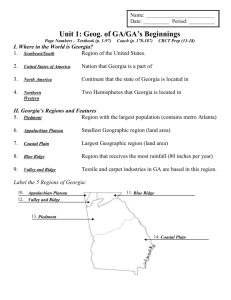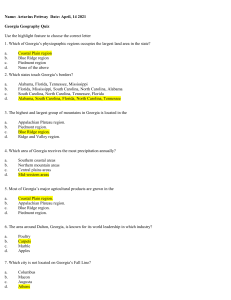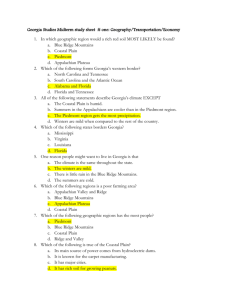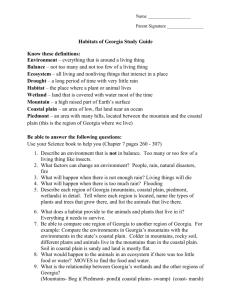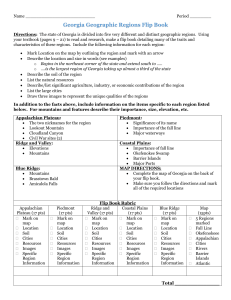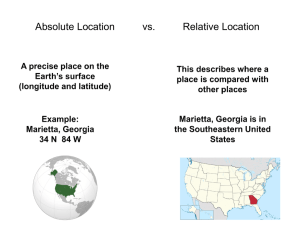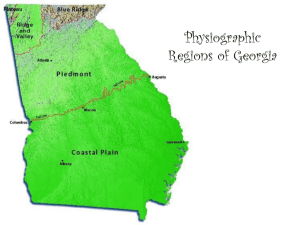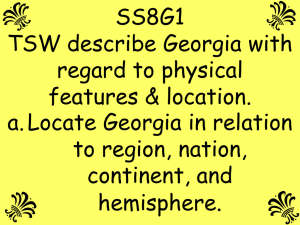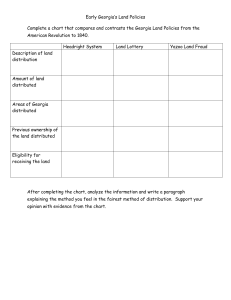Geographic Regions
advertisement
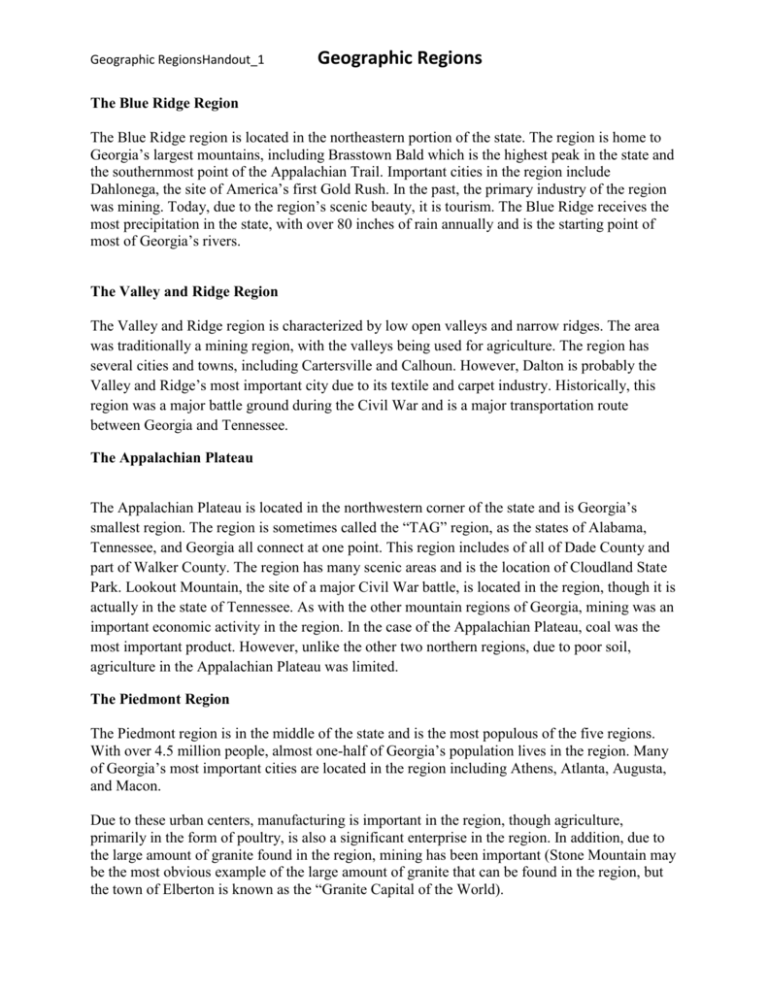
Geographic RegionsHandout_1 Geographic Regions The Blue Ridge Region The Blue Ridge region is located in the northeastern portion of the state. The region is home to Georgia’s largest mountains, including Brasstown Bald which is the highest peak in the state and the southernmost point of the Appalachian Trail. Important cities in the region include Dahlonega, the site of America’s first Gold Rush. In the past, the primary industry of the region was mining. Today, due to the region’s scenic beauty, it is tourism. The Blue Ridge receives the most precipitation in the state, with over 80 inches of rain annually and is the starting point of most of Georgia’s rivers. The Valley and Ridge Region The Valley and Ridge region is characterized by low open valleys and narrow ridges. The area was traditionally a mining region, with the valleys being used for agriculture. The region has several cities and towns, including Cartersville and Calhoun. However, Dalton is probably the Valley and Ridge’s most important city due to its textile and carpet industry. Historically, this region was a major battle ground during the Civil War and is a major transportation route between Georgia and Tennessee. The Appalachian Plateau The Appalachian Plateau is located in the northwestern corner of the state and is Georgia’s smallest region. The region is sometimes called the “TAG” region, as the states of Alabama, Tennessee, and Georgia all connect at one point. This region includes of all of Dade County and part of Walker County. The region has many scenic areas and is the location of Cloudland State Park. Lookout Mountain, the site of a major Civil War battle, is located in the region, though it is actually in the state of Tennessee. As with the other mountain regions of Georgia, mining was an important economic activity in the region. In the case of the Appalachian Plateau, coal was the most important product. However, unlike the other two northern regions, due to poor soil, agriculture in the Appalachian Plateau was limited. The Piedmont Region The Piedmont region is in the middle of the state and is the most populous of the five regions. With over 4.5 million people, almost one-half of Georgia’s population lives in the region. Many of Georgia’s most important cities are located in the region including Athens, Atlanta, Augusta, and Macon. Due to these urban centers, manufacturing is important in the region, though agriculture, primarily in the form of poultry, is also a significant enterprise in the region. In addition, due to the large amount of granite found in the region, mining has been important (Stone Mountain may be the most obvious example of the large amount of granite that can be found in the region, but the town of Elberton is known as the “Granite Capital of the World). Geographic RegionsHandout_1 Geographic Regions The Coastal Plain Region The largest region in Georgia is the Coastal Plain. Making up three-fifths of the state, this region is actually divided into two areas: the Inner and the Outer Coastal Plain. The Inner Coastal Plain is the agricultural heartland of the state. In this region peaches, peanuts, cotton and the famous Vidalia onions are important crops. The Outer Coastal Plain is the home of Georgia’s oldest city, Savannah, which was founded in 1733. Due to the abundance of pine trees in the region, naval stores were an important industry in the state. Today, the trees are used in pulp and paper production; however Baxley, Georgia is the only naval stores producer in the nation today. With its location on the Atlantic Ocean, tourism, shipping, and seafood are all important industries in the region.

